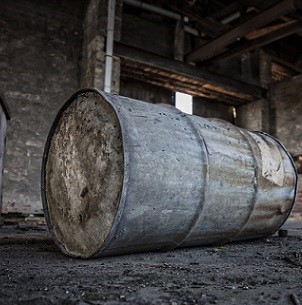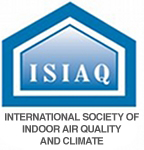A “sick building” is one of the leading causes of employee absenteeism, workplace discontent and poor productivity in Canada. Indoor air quality testing can help reveal the hidden contaminants that may be affecting your workplace.
Canada's Air Quality Testing Experts
The Air Quality Experts are a team of highly certified and experienced air quality testing and consulting specialists with offices strategically located to service all of Southern Ontario...and then some! We focus on your health first, and are dedicated to providing our commercial, workplace and residential customers with cost effective solutions geared towards improving indoor air quality and achieving a healthy environment. As “Sick Building” specialists, we expose what you can't see, in order to provide the information needed to restore the health and comfort within your home, and increase productivity and focus at your workplace. We are your local indoor air quality testing experts. Ensuring clean air and a healthy environment is what we do best! Call us for a FREE phone consultation today!
Residential / Home Testing
Canadians spend up to 90% of their time indoors breathing in hidden airborne contaminants that may cause allergies, respiratory problems, skin irritations, fatigue and more. Indoor air quality testing can help reduce or eliminate risks.
Environmental Assessments
Contact us for (ESA) Environmental Site Assessments, Hazardous Materials Testing, Designated Substance Surveys, Occupational Hygiene Services, Bacteria Sampling, Post Disaster Testing or other Environmental Consulting Services.

Schedule Your Indoor Air Quality Test or Environmental Assessment Today

Do We Service Your Area?
Below you can see some of the more popular areas we are proud to offer our specialized air quality testing services. With Offices strategically located to service much of Southern Ontario…and then some, if you don’t see your town or city listed below, just give us a call to check! We’re always happy to help.
Acton, Ajax, Aurora, Barrie, Beaverton, Belleville, Brampton, Brantford, Brighton, Burlington, Caledon Region, Cambridge, Cobourg, Collingwood, Fergus, Fort Erie, Gatineau, Guelph, Haldimand County, Halton Hills, Hamilton, Ingersoll, Kawartha Lakes, Kingston, Kitchener, Kleinburg, London, Markham, Midland, Milton, Mississauga, Muskoka District, Napanee, Newmarket, Niagara Falls, Niagara Region, Oakville, Orangeville, Orillia, Oshawa, Ottawa (GOA), Peterborough, Richmond Hill, Selwyn, St.Catharines, St.Thomas, Stratford, Tillsonburg, Toronto (GTA), Wasaga Beach, Waterloo, Woodbridge, Woodstock,

Carbon Monoxide
This colorless, odorless, tasteless gas effects humans by reducing oxygen flow to vital organs. This can cause health effects such as Angina (chest pain) and lack of energy as the body cannot meet oxygen demands. In high concentrations, carbon monoxide (CO) can even cause death if not addressed quickly.
Commonly found in offices or homes that use fossil fuels heating systems. Improper ventilation of these burnt fuels results in the present of carbon monoxide gas. Even vehicles and workplace equipment such as forklifts, generators and any other gas, diesel or propane powered equipment.
Carbon Dioxide
This highly recognized workplace hazard is naturally occurring gas present in the air we breathe. In high concentrations, it can cause headaches, drowsiness, sleepiness and oxygen deprivation, all of which can create poor attention, loss of focus and a heightened heart rate.
CO2 is most commonly found in offices or homes with a high number of people and poor ventilation. Concentrations of carbon dioxide can be directly related to the amount of fresh, outdoor air being introduced in the building. Underperforming HVAC systems can limit fresh air introduction.
Particulates
Invisible to the naked eye, these particulates enter buildings predominantly from filtration systems. When inhaled, these particulates can cause allergic reactions and respiratory problems. They include any airborne matter that is .005 to 100um in diameter (dust, fumes, smoke, pollen and more).
Commonly found in offices or homes with poor or under performing filtration systems. Particulates also enter through buildings with poor seals (windows, doors, roofs etc). Older homes can be most subject to this as they shift and settle over time.
Bacteria
Although many forms of bacteria can be present in indoor air, one of the most common is Legionella. Legionellosis, or Legionnaire’s Disease, is the resulting health effect when Legionella bacterium is inhaled. Other forms of bacteria can cause health effects ranging from respiratory failure to toxic poisoning.
Legionella bacterium specifically grows in slow moving or still warm water. In many commercial buildings this is often the case with cooling towers or showheads. As the water evaporates it enters intake systems and is then spread around buildings. In homes, Legionella can be found in hot water heater tanks where it can also spread once evaporated.
Mold
Airborne mold spores can cause a variety of health problems ranging from skin irritation to cancer. With so many strands of mold present in everyday situations, the risk of exposure can be quite high. Sluggishness, drowsiness, irritation and headaches are often the early signs of mold exposure.
Mold growth is mot commonly found in damp environments such as basements, kitchens, bathrooms and attics. Once large enough, the spores become airborne and begin to circulate throughout a building. Although many molds are harmless, others are toxic which is why is it important to know what you are dealing with.
Radon
This colorless, odorless, tasteless gas is the number one cause of lung cancer in non smokers and is responsible for thousands of deaths every year in North America.
Found in rock formations near buildings and homes, radon is an atomic gas that comes as a result of the decay of radium.Radon gases can enter buildings and homes through foundation cracks, drains, construction joints, loose pipes, sump pumps and much more. Older homes are sometimes more prone as they shift and settle over time.
Volatile Organic Compounds (VOC's)
Volatile Organic Compounds, or VOC’s, result in a number of averse health effects but some of the most common are irritation, itchiness, drowsiness and fatigue.
VOC gas concentrations are usually much higher indoors than they are outdoors as the gases are emitted from things like household chemicals, paints, cleaning supplies, building materials, office equipment and more.
Formaldehyde & UFFI
Formaldehyde is an organic chemical compound commonly found within our environment. It is a colorless gas that has a strong pungent odour known to irritate the eyes, nose and lungs. It is typically discharged into our indoor air via off-gassing from a variety of items commonly found within most homes.
Sources of formaldehyde within the home can include pressed wood products such as particle board, plywood, cabinetry, furniture and decorative paneling, as well as building and insulating materials such as Urea Formaldehyde Foam Insulation, better known as UFFI. UFFI, and pressed wood products within the home, have been known to release formaldehyde at much greater rates than other products.
Long term exposure to Formaldehyde has been known to have the potential to cause a wide variety of unfavorable health effects such as an increased risk of cancer, eye, nose and throat irritation, coughing, wheezing and allergic reactions. Air Quality Testing for indoor formaldehyde levels is known to help reduce risk. Learn more about Formaldehyde Testing Services.
Problem displaying Facebook posts. Backup cache in use.
Click to show error

QUOTE NOW!
Mold - Bacteria - Radon - Asbestos - Particulates - Carbon Dioxide - Carbon Monoxide - Volatile Organic Compounds and much more!


QUALITY TEST NOW AND










